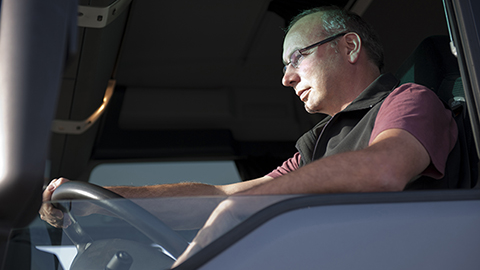Preventing Rear-End Crashes

Statistically speaking, if you or someone you know has been involved in a vehicle accident, there is a one-in-three chance it was a rear-end crash. These odds are based on statistics compiled by the National Highway Traffic Safety Administration that shows rear-end crashes account for 32 percent of vehicle crashes.1
The National Safety Council (NSC) estimates that there were more than 4.1 million rear-end collisions during 2014. These crashes resulted in more than 1.4 million injuries and 2,400 deaths.2
Why are rear-end crashes so common? Most drivers are likely to agree that distracted driving, vehicle speed, traffic congestion and aggressive driving are some of the main reasons.
While you can’t do much to change how other drivers behave, you do have control over your own driving. Here are five things you can do to help reduce your risk of being involved in a rear-end crash.
1. Avoid distracted driving
Eating, reading, using a cell phone while driving…so many drivers drive while distracted that it seems perfectly acceptable. But is it safe? No. According to countless safety studies, distracted driving is a serious problem. The NSC estimates that cell phone use and texting while driving are to blame for one-quarter of all vehicle accidents3, including rear-end collisions. Concentrate on what’s happening around you when you drive. Save non-driving activities for when you are safely parked. You’ll be less likely to be involved in a rear-end collision.
2. Maintain a safe following distance
Following too closely is one of the main causes of rear-end crashes. Automobile drivers are taught to maintain a three-second following distance. That’s considered safe for small passenger vehicles, but not for large trucks. At highway speed, a six-second following distance is necessary for large trucks.4
3. Drive at a safe speed
Driving over the speed limit, faster than surrounding traffic or faster than road/weather conditions warrant can play an important role in rear-end collisions. Obviously, the faster you drive, the greater your stopping distance will be, so it’s important to drive at a speed that will allow you to react to hazards safely. Driving faster than road and weather conditions warrant also increases the risk of losing control of your vehicle. Speeding increases the likelihood that you will be tailgating other motorists, which can increase your risk of rear-ending another vehicle. Slowing down a little can help you maintain a safe following distance, especially in heavy traffic when other drivers cut in front of you.
4. Don’t drive drowsy.
Long hours behind the wheel and late-night driving can lead to fatigue and drowsiness, which can reduce your ability to perceive and react to hazards. Avoid fatigued and drowsy driving by taking breaks and getting the sleep you need. According to sleep experts, the average person needs seven to nine hours of sleep each day to be fully rested. If you have problems sleeping, or if you feel tired despite getting plenty of sleep, you could have a sleep disorder. Consult with your doctor to learn more about evaluation and treatment options.
5. Avoid dangerous parking
When you park on the side of the road, you are asking for trouble. Many serious collisions occur when stopped vehicles on the side of the road are rear-ended. For this reason, parking along the side of the road is prohibited unless there is an emergency, or the area is a designated pull-off where parking is permitted. If you must stop on the side of the road for a legitimate emergency, pull as far away from the traveled portion of the roadway as is safely possible. Activate your four-way flashers and place emergency warning triangles around your vehicle promptly.
Sources
1 Traffic Safety Facts 2012, National Highway Traffic Safety Administration, 2014.
2 2016 Injury Facts, National Safety Council
3 2014 Injury Facts, National Safety Council
4 Tractor-Trailer Driver Handbook, Professional Truck Driver Institute of America, 1997.
Doc#:LCT709




